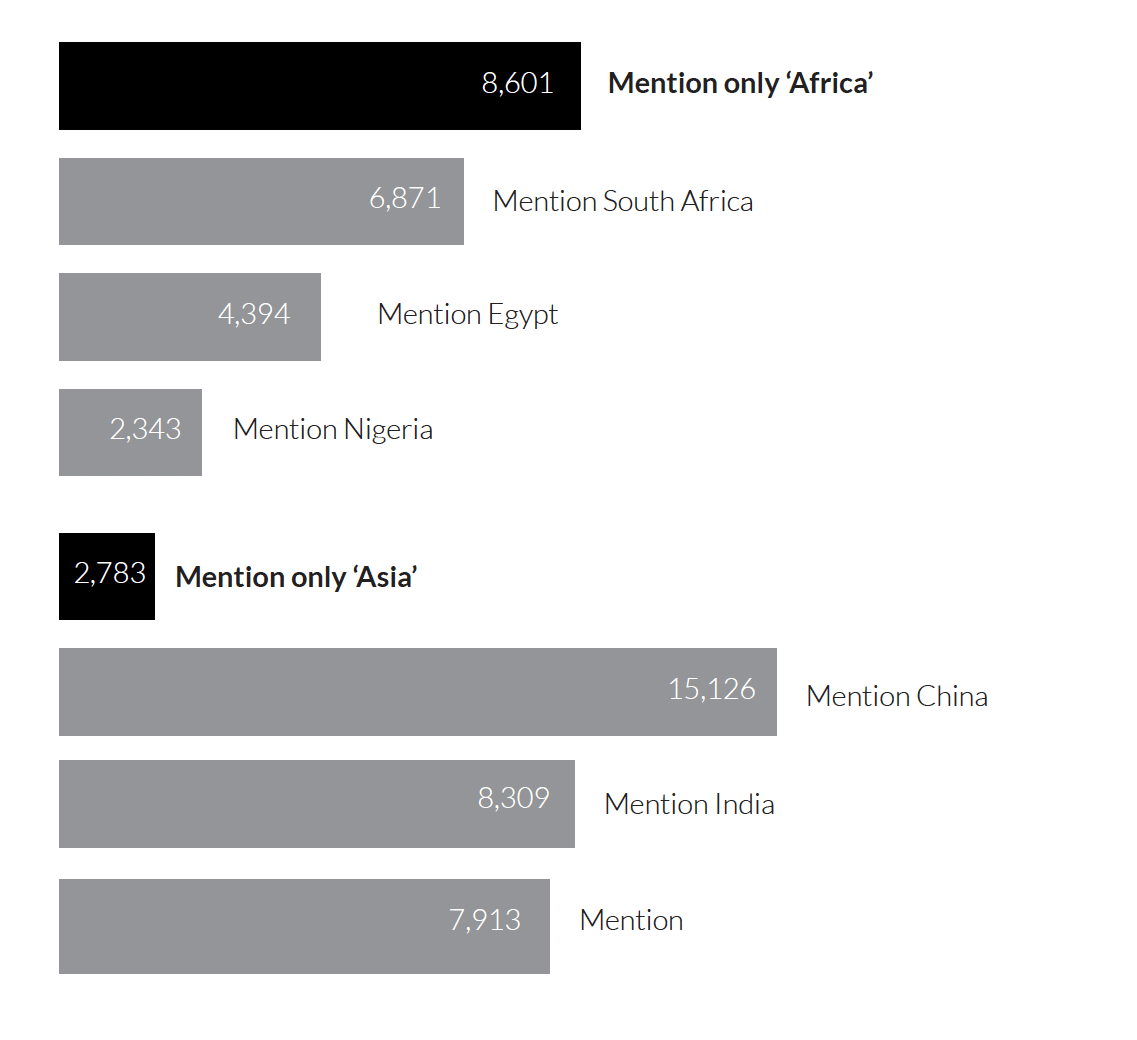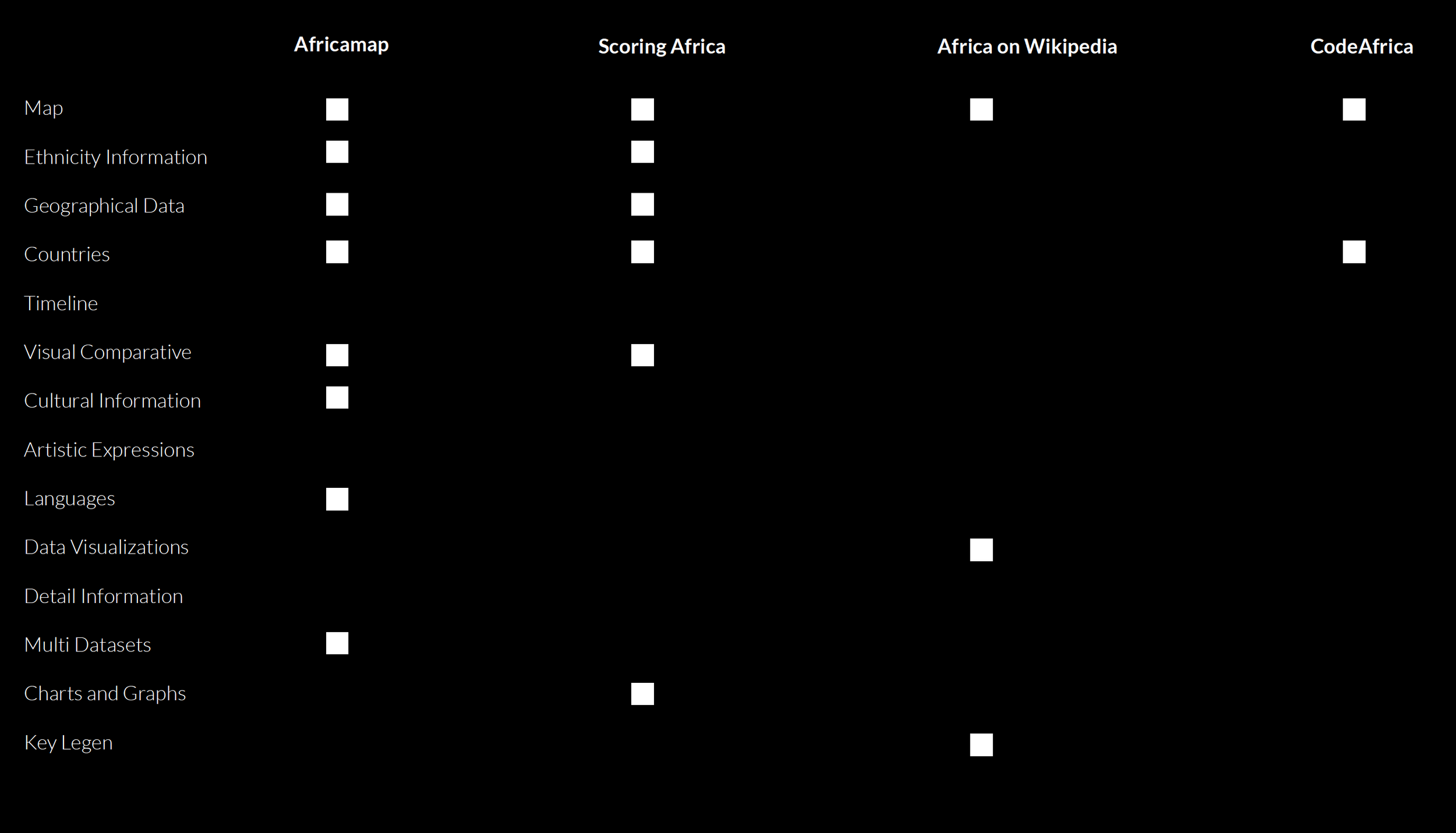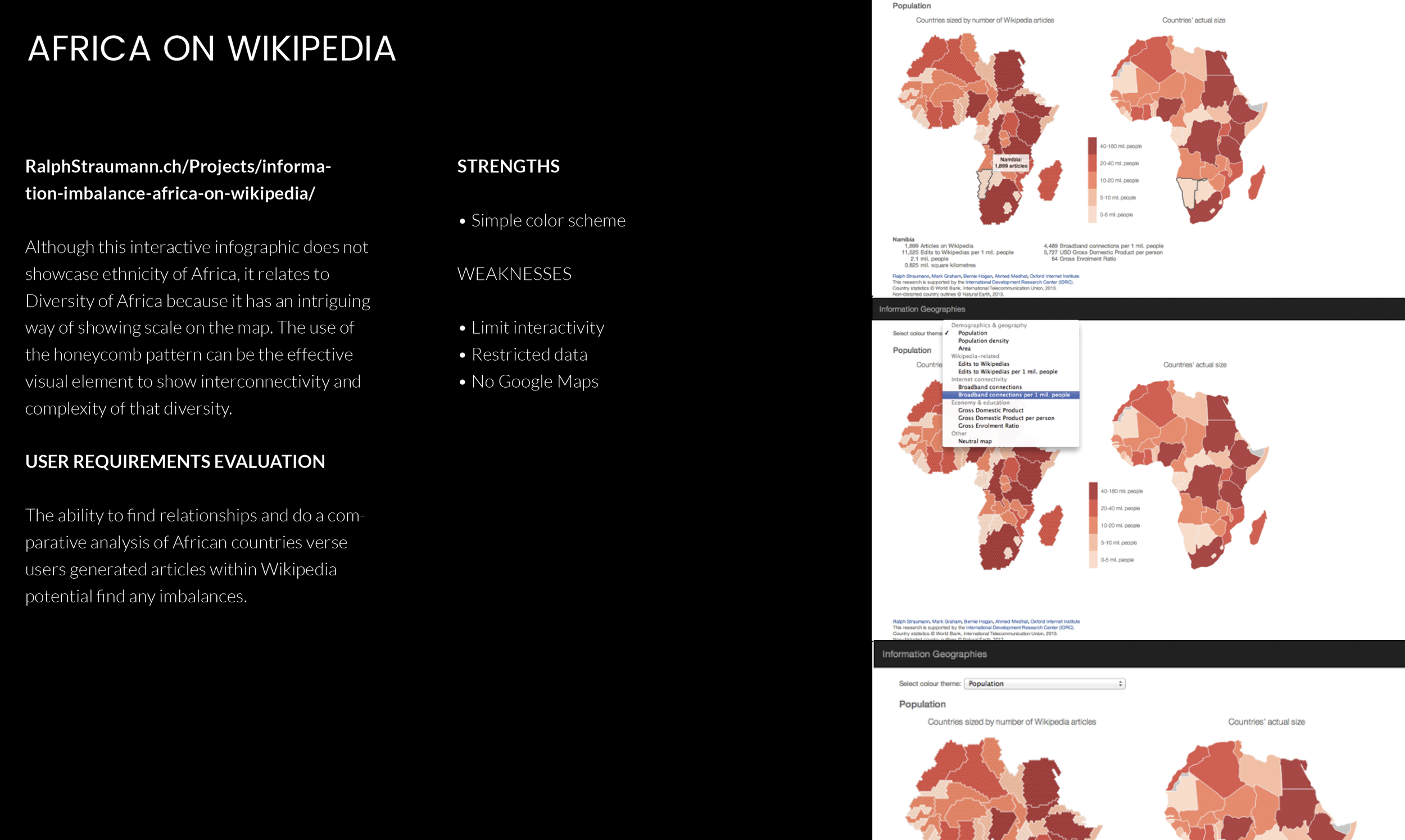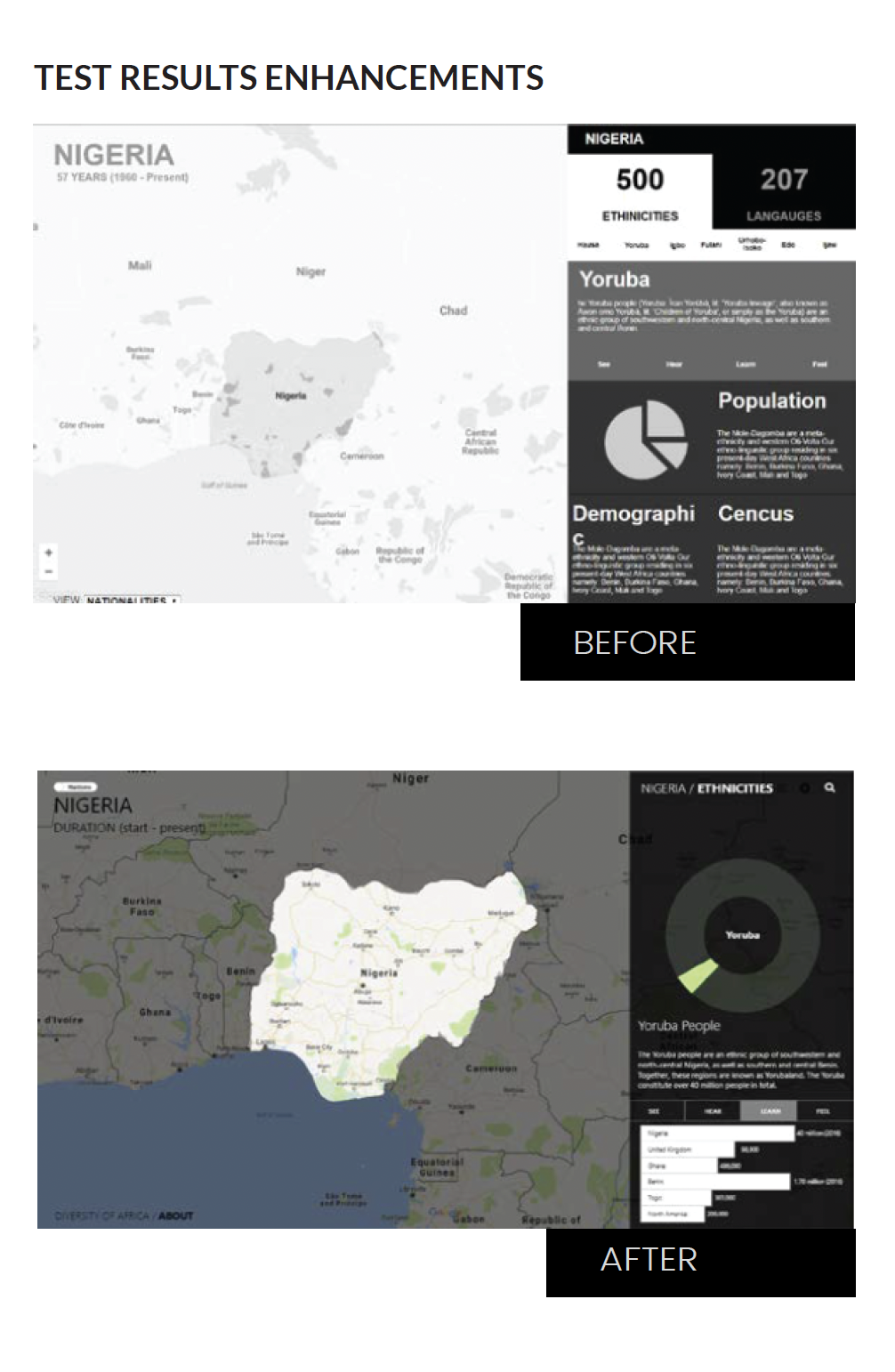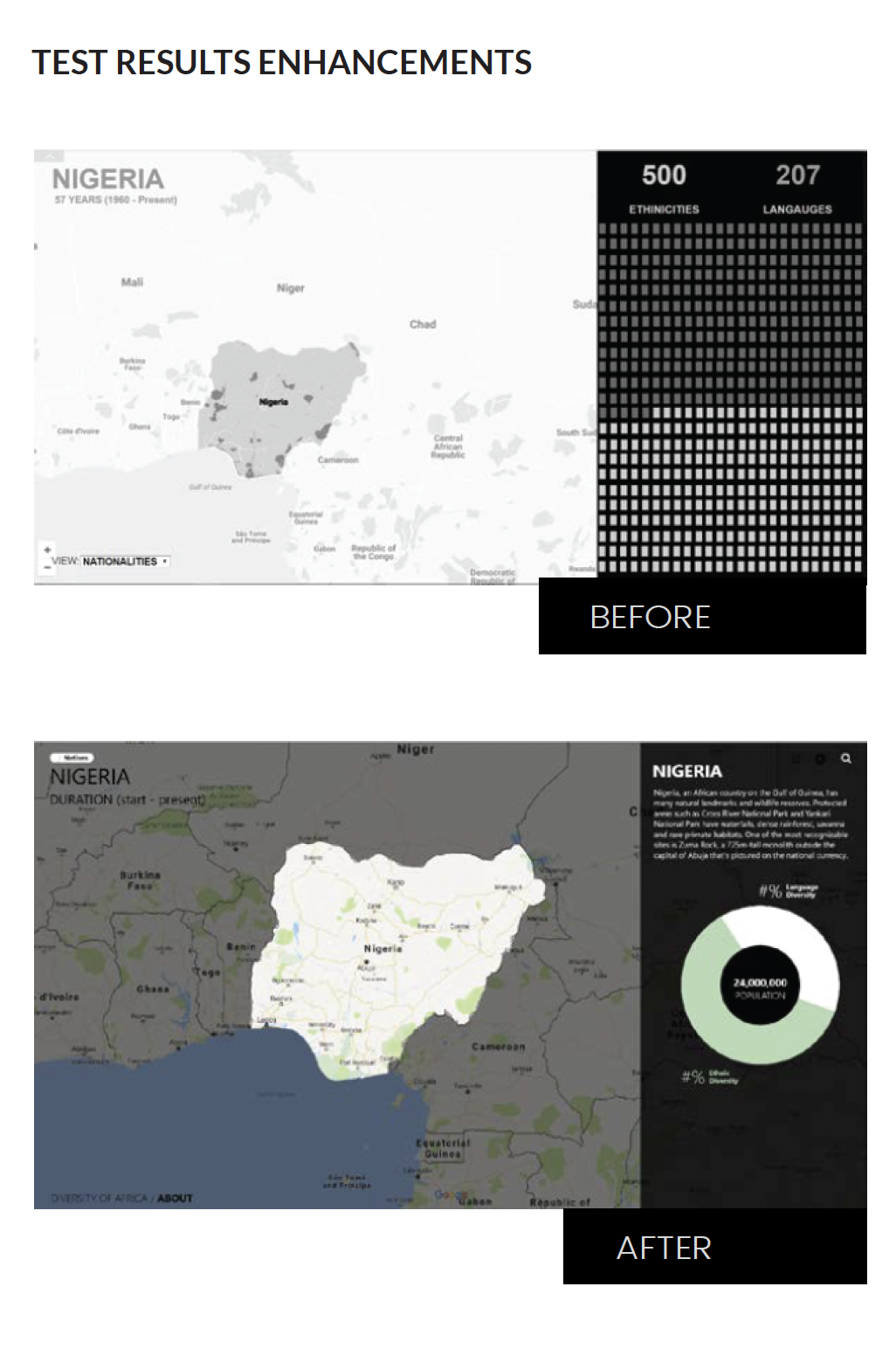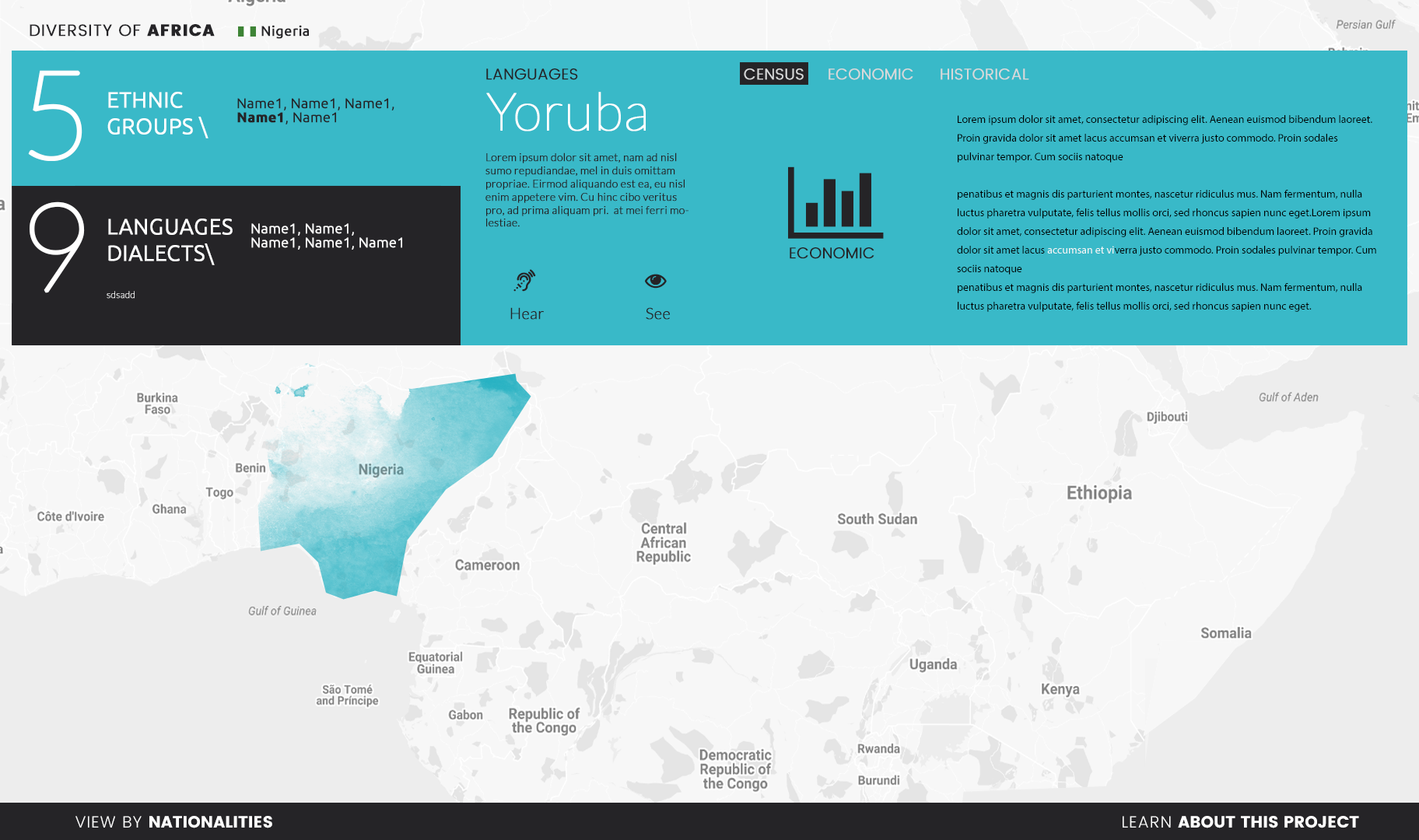Reframing Africa’s Narrative Through Interactive Education
The Impact
Raised awareness of Africa's diverse ethnic groups, languages, and traditions.
Provided an intuitive platform to explore complex cultural data through visual storytelling.
Enabled deeper engagement through interactive maps, multimedia, and data visualization.
-
Client
Academy of Art University MFA Thesis Project – Designed for academics, educators, and cultural enthusiasts.
-
Team
Client
Me as UX strategist, UX designer, UI engineer, and DB engineer -
Timeline
August 2017 - April 2018
Source: http://africaisntacountry.herokuapp.com/
Root Analysis
The continent of Africa is severely misrepresented in popular media due to misinformation, disinformation, and generalization. There is a notable lack of educational applications that effectively promote and showcase Africa's rich cultural and ethnic variety. The main issues identified include:
1. Lack of accessible and engaging data– Most educational platforms present Africa’s diversity in static, text-heavy formats that are not appealing to users.
2. Difficulty in visualizing ethnic distribution – Users have struggled to understand how ethnic groups relate to one another geographically and culturally.
3. Complexity of historical and linguistic data – There is a need for an interface that simplifies exploration while still providing comprehensive information.
Proof of Concept
Personas Flow Diagrams
Strategic Process
The objective was to create an engaging and cohesive interactive experience by incorporating current data visualizations, interactive infographics, audio, and imagery.
The primary audience consists of students, directors, researchers, and professors in academia, aged 14 to 38. The secondary audience includes members of non-profit organizations, government agencies, and museum curators who focus on the African Diaspora or Afrocentric themes, aged 18 to 42. The tertiary audience comprises Afrocentric individuals, such as parents, travelers, and enthusiasts, who are interested in learning about or sharing African cultures and practices.
To develop an effective UX strategy, a comparative analysis is needed on the following:
AfricaMap (Harvard CGA) – Strong data structure but lacked UX appeal.
Scoring Africa – Limited interactivity.
The Refugee Project – Great visual storytelling; inspired clean design & UX.
Design Process
During the visual design process, I sought inspiration for effective ways to communicate the message in my application. The goal was to use animation and narration to bring the data to life while simplifying complex information into more digestible pieces.
Visual Style
Minimalist yet vibrant to reflect the diversity of Africa’s cultures.
Interactive storytelling approach with engaging micro-interactions.
Core Features
Ethnic & Linguistic Map – Users can explore ethnic groups across geographic boundaries.
Cultural Media Library – Includes audio samples, artwork, and traditional music.
Comparative View – Side-by-side analysis of ethnic and cultural similarities.
Design Validation
I performed usablity sessoins that focuses on the ease and quickness of specific user tasks. These user tests were recorded on video and focused on:
Task success rate – Users needed to quickly find and compare ethnic groups.
Navigation clarity – Ensuring a smooth flow between maps, stories, and media.
Engagement levels – Measuring interaction depth through analytics.
Key Findings:
Users loved the interactive elements, making learning more immersive.
Some struggled with Task #4 (Language Samples), prompting an interface redesign.
Analysis & Conclusion
Developing an educational application for this purpose presented significant challenges, particularly in gathering reliable and diverse data and ensuring compatibility with various resources. Despite these obstacles, support from academic mentors facilitated both technical and philosophical growth, enhancing our understanding of interaction design and the cultural significance of art.
Ultimately, the project succeeded in creating a socially impactful tool to promote Africa’s diversity, though there are still opportunities for further improvement and expansion.
SUCCESSES
Clean Ul
Succint Interface
Impactful Infographic
Full Stack Development Expertise
CHALLENGES
Data Curation
User Testing Scheduling
Development Library Compatitiblties
KNOWLEDGE GAIN
Mastery UX Process
Mastery in Typography
Inforgaphic Understanding
Database Development
Coding Efficiency


